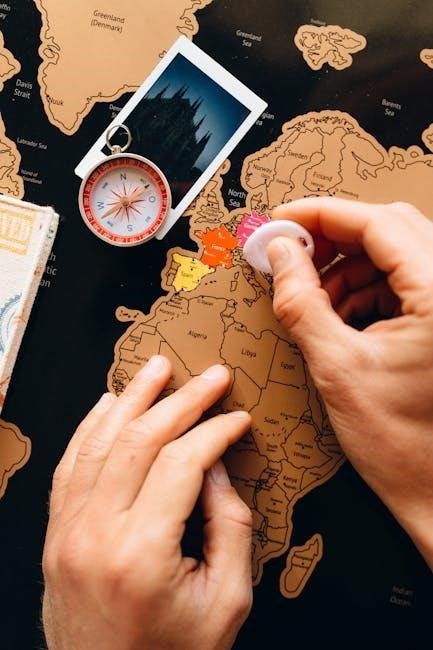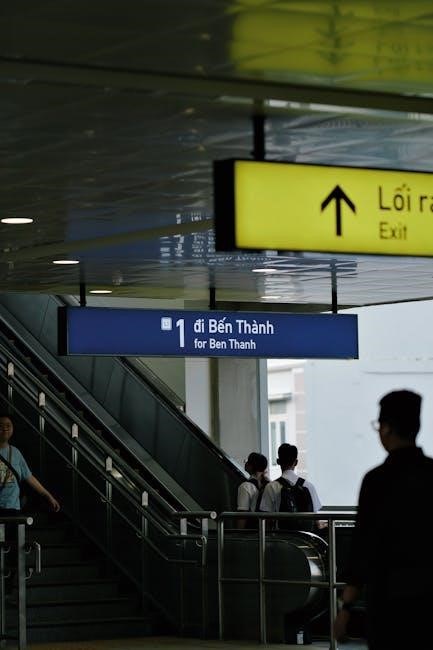Vietnam, a country of stunning landscapes and rich cultural heritage, offers countless opportunities for exploration. From the misty mountains of the north to the vibrant cities of the south, a Vietnam travel map is your essential guide to navigating this diverse and captivating destination. Whether you’re exploring ancient cities, relaxing on tropical beaches, or trekking through breathtaking natural wonders, this map will help you unlock the beauty and hidden gems of Vietnam, ensuring an unforgettable adventure.

Northern Vietnam
Northern Vietnam captivates travelers with its stunning landscapes, from Hanoi’s historic charm to Ha Long Bay’s emerald waters and Sapa’s mountain vistas, offering a blend of culture and nature.
Northeast Vietnam
Northeast Vietnam is a region of stunning natural beauty, featuring lush forests, cascading waterfalls, and picturesque valleys. It is home to iconic destinations like Ba Be National Park, where visitors can enjoy boat trips on the lake and explore nearby caves. Cao Bang province, known for its breathtaking landscapes, offers trekking opportunities and a chance to experience the vibrant cultures of ethnic minority groups. The region is also famous for the Ban Gioc Waterfall, one of the most beautiful in Asia, and the historic Dong Dang Border Gate. Northeast Vietnam is a must-visit for nature lovers and those seeking off-the-beaten-path adventures, showcasing the country’s pristine charm and rich heritage.
Northwest Vietnam
Northwest Vietnam is renowned for its breathtaking landscapes and rich cultural heritage. Sapa, a popular destination, offers stunning views of terraced rice fields and the majestic Fansipan Mountain, known as the “Roof of Indochina.” The region is also home to various ethnic minority groups, whose traditional villages and vibrant markets provide a glimpse into Vietnam’s diverse culture. Dien Bien Phu, a historic site, commemorates the decisive battle of the First Indochina War. The Hoang Lien Son mountain range, with its lush forests and diverse ecosystems, attracts adventurers for trekking and exploration. Northwest Vietnam is a perfect blend of natural beauty, cultural richness, and historical significance, making it a must-visit for any traveler.
Red River Delta
The Red River Delta, located in Northern Vietnam, is a region of immense historical and cultural significance. As the cradle of Vietnamese civilization, it boasts ancient traditions and vibrant festivals. Hanoi, the capital city, stands out as a UNESCO World Heritage Site, blending colonial charm with modern vitality. Other notable destinations include Ninh Binh, often called “Halong Bay on Land,” and Hai Duong, famous for its traditional ceramics and historical sites. The delta’s fertile plains make it a key agricultural hub, while its rich heritage offers a glimpse into Vietnam’s past. Explore this region to experience the heart of Vietnamese culture and history.

Central Vietnam
Central Vietnam captivates visitors with its blend of cultural heritage and stunning natural beauty. Home to historic cities like Hoi An and Hue, it also features the breathtaking Central Highlands, offering a mix of adventure and tranquility.
North Central Vietnam
North Central Vietnam is a region of striking landscapes and cultural richness. It includes provinces like Thanh Hóa and Nghệ An, known for their pristine beaches and historical sites. The area is also home to the iconic Phong Nha-Kẻ Bàng National Park, a UNESCO World Heritage Site, featuring stunning caves and lush forests. This region offers a mix of adventure activities, such as trekking and caving, and opportunities to experience local ethnic cultures. With its diverse attractions, North Central Vietnam is a must-visit destination for those seeking both natural beauty and cultural immersion;
Central Highlands
The Central Highlands of Vietnam, also known as Tây Nguyên, is a region of immense natural beauty and cultural richness. Located in the country’s interior, it is home to stunning landscapes, including rolling hills, vast coffee plantations, and picturesque towns like Da Lat and Buon Ma Thuot. The region is famous for its cool climate, making it a popular retreat from the heat of the lowlands. Visitors can explore the iconic Trung Nguyen Coffee Village, trek through lush forests, or experience the vibrant cultures of indigenous ethnic groups. The Central Highlands also boasts breathtaking waterfalls and scenic drives, offering unforgettable experiences for travelers seeking adventure and tranquility.
South Central Coast
The South Central Coast of Vietnam is a treasure trove of stunning beaches, vibrant cities, and rich cultural experiences. This region is home to popular destinations like Nha Trang, known for its pristine beaches and vibrant nightlife, and Da Nang, a bustling city with iconic landmarks like the Golden Bridge. Hoi An, a UNESCO World Heritage Site, captivates visitors with its ancient architecture and charming lantern-lined streets. The coastal towns of Quy Nhon and Phan Thiet offer serene landscapes and fresh seafood, while the Cham Islands provide opportunities for snorkeling and diving. The South Central Coast is also famous for its delicious cuisine, including fresh seafood and local specialties like banh mi and cao lau. This region is a perfect blend of relaxation, culture, and adventure, making it a must-visit on any Vietnam travel map.
Overview of Major Tourist Destinations
Vietnam is home to a diverse array of iconic destinations that cater to every traveler’s interests. From the bustling streets of Hanoi and the breathtaking limestone karsts of Ha Long Bay to the scenic terraced fields of Sapa, the country offers unparalleled natural beauty. The ancient city of Hue, with its imperial tombs and citadels, and the charming town of Hoi An, famous for its lanterns and tailor shops, are must-visits for history enthusiasts. Beach lovers flock to Da Nang, Nha Trang, and Mui Ne, while adventurers explore the rolling hills of Da Lat. In the south, Ho Chi Minh City and the Mekong Delta provide insights into modern Vietnamese life and rural traditions. These destinations, highlighted on a Vietnam travel map, promise unforgettable experiences.
Vietnam’s Tourist Maps
Vietnam’s tourist maps provide detailed insights into the country’s iconic destinations, cultural landmarks, and scenic routes. These maps highlight popular spots like Hanoi, Ha Long Bay, and Ho Chi Minh City, offering travelers a visual guide to plan their journey and discover hidden gems.
City Tourist Maps
City tourist maps in Vietnam provide detailed insights into the attractions, landmarks, and essential services within each major urban area. These maps are designed to help travelers navigate cities like Hanoi, Ho Chi Minh City, and Hoi An with ease. From Hanoi’s historic Old Quarter to Ho Chi Minh City’s bustling District 1, the maps highlight iconic sites, restaurants, and shopping districts. They also feature practical information such as public transportation routes, hotels, and local amenities. For instance, Hoi An’s map showcases its ancient architecture and lantern-filled streets, while Da Nang’s map points out its stunning beaches and nearby attractions like Ba Na Hills. Additionally, maps for smaller cities like Hue and Nha Trang offer insights into their cultural and natural wonders. These city-specific guides are invaluable for making the most of your time in each destination.
Regional Tourist Maps
Regional tourist maps provide a comprehensive overview of Vietnam’s diverse geographic and cultural landscapes. These maps divide the country into key areas, such as Northern Vietnam, Central Vietnam, and Southern Vietnam, each offering unique attractions. The Northern Vietnam map highlights iconic destinations like Ha Long Bay, Sapa, and Ninh Binh, while the Central Vietnam map features historic sites like Hue and Hoi An. Southern Vietnam maps showcase vibrant cities like Ho Chi Minh City and the scenic Mekong Delta. These maps also detail natural wonders, cultural landmarks, and travel routes, making it easier to plan trips across multiple provinces. They are essential for exploring Vietnam’s varied regions and experiencing its rich heritage.

Weather and Best Times to Visit
Vietnam’s climate varies significantly by region, so understanding the weather is crucial for planning your trip. Northern Vietnam has a tropical monsoon climate with four distinct seasons, while Central and Southern Vietnam experience a tropical savanna climate with two main seasons. The best time to visit Northern Vietnam is during spring (March to May) and autumn (September to November), when temperatures are mild and rainfall is minimal. Central Vietnam is ideal from January to August, avoiding the heavy rains of the wet season. Southern Vietnam is best visited during the dry season, from December to April. Always check local weather forecasts before traveling to ensure optimal conditions for your itinerary and outdoor activities.
Transportation Options
Vietnam offers a variety of transportation options to suit different budgets and preferences. Domestic flights provide quick access to major cities like Hanoi, Ho Chi Minh City, and Da Nang. Public buses are an affordable way to travel between regions, while trains, such as the Reunification Express, offer scenic routes. Taxis and ride-hailing apps are convenient for city commutes, but always use reputable services. Motorbikes are popular for short trips, allowing flexibility to explore rural areas. Ferries and boats are essential for reaching coastal destinations like Ha Long Bay or Phu Quoc Island. Planning ahead and booking in advance, especially during peak travel seasons, ensures smooth journeys across this diverse country.

Suggested Itinerary
A well-planned itinerary ensures you maximize your Vietnam adventure. Start in Hanoi, exploring the Old Quarter and colonial landmarks. Spend a night cruising Ha Long Bay, then head to Hue for imperial history. Next, visit Hoi An for its charming ancient town and vibrant markets. Continue to Nha Trang for beach relaxation or Da Lat for mountain retreats. End in Ho Chi Minh City, discovering its dynamic energy and nearby Mekong Delta. This 10-day journey balances cultural immersion, scenic beauty, and culinary delights, offering a comprehensive taste of Vietnam’s diversity. Use your travel map to navigate seamlessly between destinations and enjoy the iconic landmarks and hidden gems along the way.
Cultural Festivals and Traditions
Vietnam is a land of vibrant cultural festivals and timeless traditions. The Lunar New Year (Tết Nguyên Đán) is the most significant celebration, showcasing colorful parades, traditional foods, and family gatherings. The Mid-Autumn Festival (Tết Trung Thu) captivates with lanterns and mooncakes, while the Buffalo Fighting Festival in Haiphong highlights local customs. Traditional music, dance, and art performances are integral to these events. Visitors can experience Vietnam’s spiritual side through temple festivals and ancestor worship rituals. Consulting a travel map helps locate these cultural hotspots, allowing travelers to immerse themselves in the nation’s rich heritage and witness its festivals firsthand, creating unforgettable memories of Vietnam’s cultural tapestry.
Travel Essentials
Planning a trip to Vietnam requires careful preparation to ensure a smooth and enjoyable journey. Essential items include lightweight clothing for tropical weather, sturdy footwear for hiking, and rain gear for unexpected showers. Don’t forget sun protection, insect repellent, and a reusable water bottle. The Vietnamese Dong (VND) is the local currency, though USD is widely accepted in tourist areas. Stay hydrated, avoid undercooked food, and consider vaccinations before traveling. Respect local customs by dressing modestly when visiting temples. Learning basic Vietnamese phrases can enhance your interactions. Stay informed about local conditions and carry a map or GPS device for navigation. A well-prepared traveler will make the most of Vietnam’s incredible experiences.
Downloadable Maps
Downloadable maps are a convenient and practical tool for navigating Vietnam’s diverse regions. Many websites offer free, high-resolution maps that can be printed or saved to your device. These maps often include detailed information about popular destinations, transportation routes, and key landmarks. City-specific maps, such as those for Hanoi, Ho Chi Minh City, and Da Nang, are particularly useful for exploring urban areas. Regional maps covering Northern, Central, and Southern Vietnam provide a broader overview of the country’s geography and attractions. By downloading these maps, travelers can ensure they have access to essential information even without internet connectivity, making them indispensable for both city tours and off-the-beaten-path adventures.
Vietnam, with its rich cultural heritage and diverse landscapes, is a destination that offers something for every traveler; From the bustling streets of Hanoi to the serene beaches of Da Nang, and from the ancient charm of Hoi An to the vibrant energy of Ho Chi Minh City, Vietnam’s attractions are endless. A Vietnam travel map serves as the ultimate companion, guiding you through the country’s iconic destinations and hidden gems. Whether you’re planning a detailed itinerary or seeking spontaneous adventures, this map ensures you make the most of your journey. With its comprehensive details and regional insights, it helps you navigate seamlessly, turning your Vietnam experience into an unforgettable memory.


